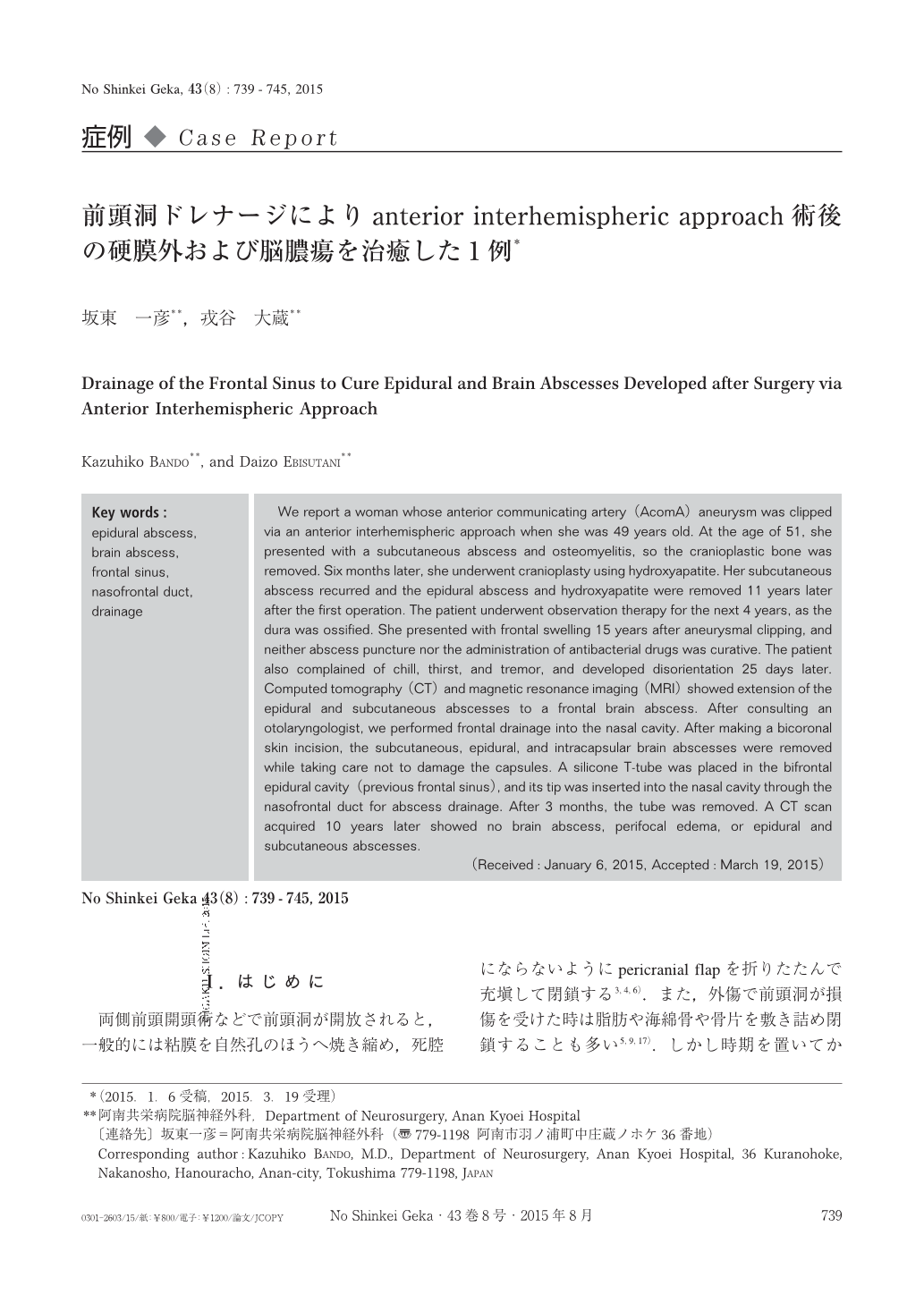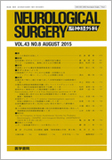Japanese
English
- 有料閲覧
- Abstract 文献概要
- 1ページ目 Look Inside
- 参考文献 Reference
Ⅰ.はじめに
両側前頭開頭術などで前頭洞が開放されると,一般的には粘膜を自然孔のほうへ焼き縮め,死腔にならないようにpericranial flapを折りたたんで充塡して閉鎖する3,4,6).また,外傷で前頭洞が損傷を受けた時は脂肪や海綿骨や骨片を敷き詰め閉鎖することも多い5,9,17).しかし時期を置いてから同部に感染や気脳症10,11)を生じることがあり,一般的には感染物を除去後,再び前頭洞を閉鎖して治癒させることが多い.
われわれは,anterior interhemispheric approachによる前交通動脈瘤術後に感染を繰り返したため前頭洞閉鎖にて治療したが,さらに再発した皮下膿瘍や硬膜外膿瘍に対し硬膜外からの膿瘍除去と前頭洞開放ドレナージにより治癒し得た症例を経験したので報告する.
We report a woman whose anterior communicating artery(AcomA)aneurysm was clipped via an anterior interhemispheric approach when she was 49 years old. At the age of 51, she presented with a subcutaneous abscess and osteomyelitis, so the cranioplastic bone was removed. Six months later, she underwent cranioplasty using hydroxyapatite. Her subcutaneous abscess recurred and the epidural abscess and hydroxyapatite were removed 11 years later after the first operation. The patient underwent observation therapy for the next 4 years, as the dura was ossified. She presented with frontal swelling 15 years after aneurysmal clipping, and neither abscess puncture nor the administration of antibacterial drugs was curative. The patient also complained of chill, thirst, and tremor, and developed disorientation 25 days later. Computed tomography(CT)and magnetic resonance imaging(MRI)showed extension of the epidural and subcutaneous abscesses to a frontal brain abscess. After consulting an otolaryngologist, we performed frontal drainage into the nasal cavity. After making a bicoronal skin incision, the subcutaneous, epidural, and intracapsular brain abscesses were removed while taking care not to damage the capsules. A silicone T-tube was placed in the bifrontal epidural cavity(previous frontal sinus), and its tip was inserted into the nasal cavity through the nasofrontal duct for abscess drainage. After 3 months, the tube was removed. A CT scan acquired 10 years later showed no brain abscess, perifocal edema, or epidural and subcutaneous abscesses.

Copyright © 2015, Igaku-Shoin Ltd. All rights reserved.


